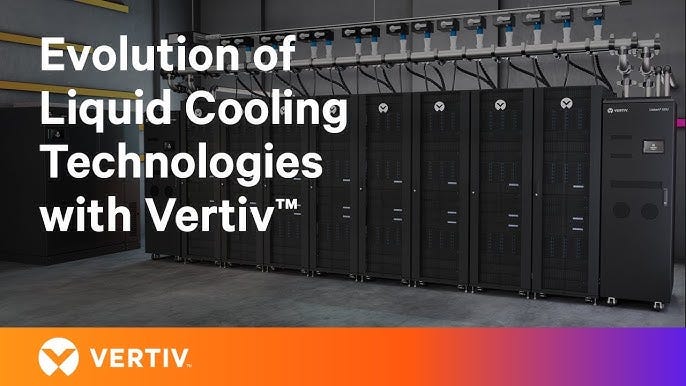Part 2: Continuing how AI is influencing Data Center Cooling and Dive into Vertiv
Welcome back to all our tech enthusiasts! Recall our exploration of the data center cooling realm? We delved into its intricate technology and soared through its market landscape. Oh, and let's not forget that enlightening survey we dissected in Part 1. Well, hold onto your hats, because it's time to dive into the sequel, and trust me, it's brimming with intrigue. Get comfortable, and maybe grab some popcorn, as we set course for our next thrilling adventure: how AI is affecting the data center cooling & the Vertiv.
Power Management in AI-Driven vs. CPU-Based Data Centers:
As we mentioned in part 1, we talked to multiple institutional investors about this in the last 4 months - GPUs consume almost 4X more power than the CPU-centric servers.
Managing power and thermal aspects of data centers has become increasingly complex, particularly as we move into the era of AI-driven workloads. The power density and cooling requirements of AI-centric data centers differ substantially from those of traditional, CPU-based centers. Let's dissect the nuances of power and thermal management for these facilities.
Power Density: AI-driven workloads, especially those that involve GPUs or dedicated AI chips, generally have higher power densities. This means that while the physical footprint might not always differ significantly, the electrical infrastructure (like PDUs, UPS systems, etc.) might need to be designed to handle these higher loads.
Efficiency: Power efficiency becomes paramount. As the power density rises, the importance of efficient power distribution, energy storage, and backup solutions becomes more pronounced. This translates to advanced UPS systems and energy storage solutions to prevent any downtime or data loss.
Thermal Management (Cooling) in AI-Driven vs. CPU-Based Data Centers:
Cooling Demand: GPUs and dedicated AI processors generate more heat than traditional CPUs, necessitating more efficient and effective cooling solutions. This might mean an increase in the deployment of liquid cooling solutions or advanced air-cooling solutions tailored for high-density racks.
Cooling Techniques: Techniques like hot/cold aisle containment, in-row cooling, and rear door heat exchangers become more important in AI-focused data centers. Advanced liquid cooling solutions, including direct-to-chip or immersion cooling, are also gaining traction, especially for high-performance computing needs.
Monitoring & Management: Given the criticality of maintaining optimum temperatures, sophisticated monitoring and management systems are employed. These tools ensure that cooling resources are deployed effectively, maximizing efficiency while ensuring equipment safety. Also, as liquids become a prominent factor for cooling, leak detection systems become equally critical.
Expected Uplift in Content $s:
Higher Cost Per MW: Given the enhanced power and cooling requirements for AI-driven data centers, we can expect a higher cost per MW compared to traditional data centers. The exact uplift would vary based on factors like location (ambient temperature, electricity costs) and specific AI workloads, but industry estimates often suggest a significant increment.
Increased Content in Data Centers: With AI, there's not just an increase in power and cooling infrastructure but also in the associated monitoring, management, and automation tools. This leads to a richer content mix within the data center, driving up costs.
ROI Consideration: While the initial outlay for AI-centric data center infrastructure might be higher, it's crucial to weigh this against the potential returns. Efficient power and cooling can lead to significant operational savings over time, especially when considering the potential business impact of AI-driven insights and automation.
In conclusion, while the shift to AI-centric workloads in data centers presents challenges in power and thermal management, it also offers opportunities for companies to innovate and provide solutions that cater to these evolving needs. The uplift in content costs underscores the value and importance of effective infrastructure for modern, AI-driven applications.
Hear from industry panel
Now let’s hear from industry experts on what exactly is happening in data center cooling .




